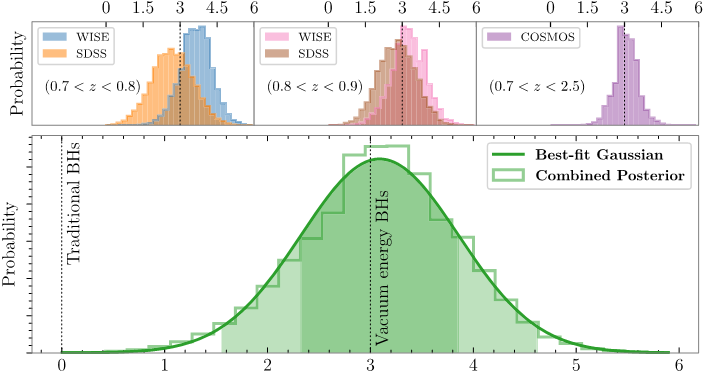First observational evidence linking black holes to dark energy(1)
Searching through existing data of about 600 galaxies spanning nine billion years, Prof. Nobuyuki Sakai of Yamaguchi University and his colleagues have uncovered the first evidence of “cosmological coupling” of black holes and dark energy. The international team consists of 17 researchers from 15 institutions across 9 countries (USA, Canada, Portugal, UK, Netherlands, Cyprus, Germany, Denmark, and Japan).
Both the expansion of the universe and the existence of black holes were predicted by Einstein’s equations and have been verified by observations. However, the two have been considered independent phenomena because of their completely different scales. The mass of a black hole is considered constant without matter inflow.
In this study, we first discovered from about 600 galaxy data that the mass of a supermassive black hole, with a mass more than 100,000 times that of the sun, is not constant, but rather increases with time. Next, in order to clarify the relation between the mass and the cosmic expansion, we assume the following relation between the scale factor of the universe, α, and the mass of a massive black hole, Μ, Μ∝αk, and evaluate k. As a result, we obtained the probability distribution for k as shown in Figure 1, and evaluated its value as![]()
This result cannot be explained by other causes, such as mergers between black holes, and suggests that the cosmic expansion is affecting the black hole mass.
It is particularly noteworthy that k is almost 3. α3 represents the rate of increase of spatial volume, and there is only one thing in the universe whose mass increases in proportion to its volume. It is dark energy. Since the mass density of dark energy is constant, its mass increases in proportion to the volume of the universe. This strongly suggests that black holes and dark energy influence each other.
However, the story is not so simple. In standard theories of gravity and dark energy, it is known that the gravitational mass observed by an outside observer remains constant, even if the dark energy isolates and forms a black hole or a compact object and its volume increases. Therefore, the present observational result is a mystery, and elucidating this mechanism is a major challenge for the future.

Figure 1. The probability distribution of k estimated from five galaxy survey data (top three boxes) and that obtained by summing them (bottom figure). It peaks at k≈ 3.
Published Thesis Information
- Journal:The Astrophysical Journal Letters
- Title:Observational Evidence for Cosmological Coupling of Black Holes and its Implications for an Astrophysical Source of Dark Energy
- Authors:Duncan Farrah, Kevin S. Croker, Michael Zevin, Gregory Tarlé, Valerio Faraoni, Sara Petty, Jose Afonso, Nicolas Fernandez, Kurtis A. Nishimura, Chris Pearson, Lingyu Wang, David L Clements, Andreas Efstathiou, Evanthia Hatziminaoglou, Mark Lacy, Conor McPartland, Lura K Pitchford, Nobuyuki Sakai, Joel Weiner
- Release Date:2023年2月15日
- DOI:10.3847/2041-8213/acb704
- LINK:https://iopscience.iop.org/article/10.3847/2041-8213/acb704
Terminology
- (1)Dark Energy:Gravity, as it is called “universal attraction”, attracts every object we know. On the other hand, the current accelerated expansion of the universe suggests that the universe is filled with “something that exerts repulsive force”. This unidentified “something” is called “dark energy”.